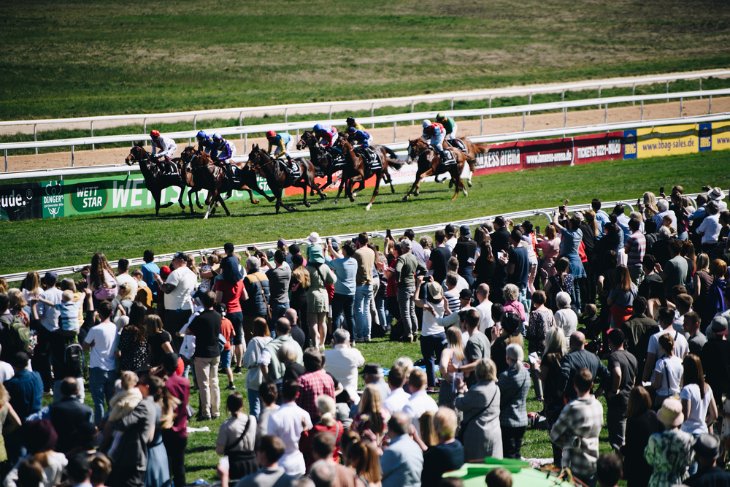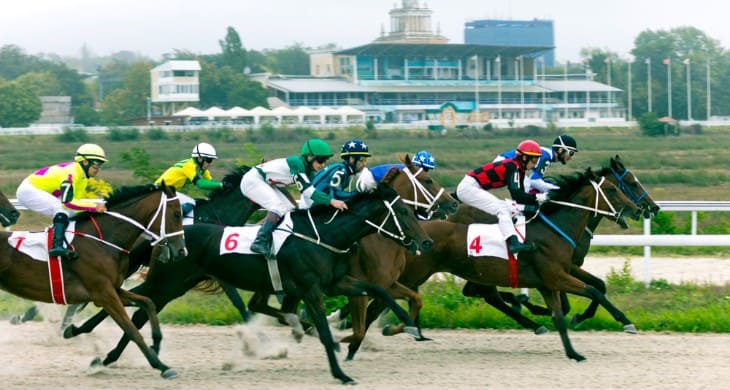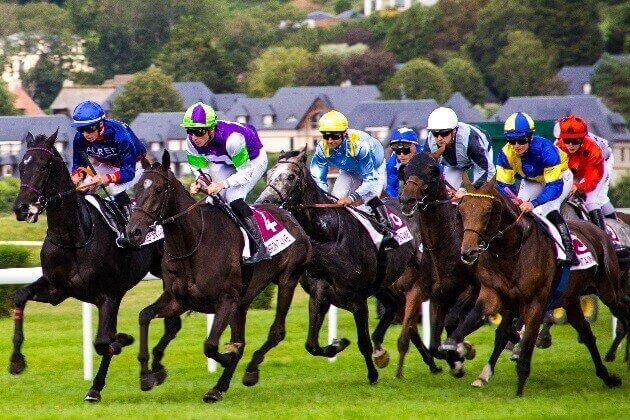- The Grand Tapestry of Britain's Racing Festivals
- The Grand National; A Thrilling Spring Tradition
- Glorious Goodwood: Where Elegance Meets Equine Prowess
- The Roar of Cheltenham: A Jumping Spectacular
- Royal Ascot: Where Equine Majesty Reigns Supreme
- The Derby: A Test of Equine Endurance and Resilience
- The Unique Customs of British Racing Festivals
- Conclusion
The roots of horse racing, in Britain date centuries back, when horses played roles in military and agricultural activities. Over time what started as a necessity transformed into a pastime that tested both equine strength and human skill captivating audiences across the nation.
As time passed, the sport's popularity continued to soar, with its traditions becoming deeply ingrained in society. From the Newmarket racecourse established during Charles IIs reign to King James I's support, horse racing has become a part of Britain's sporting legacy that still thrives today.
- The Kiplingcotes Derby, established in 1519, is considered one of the oldest horse races still run today.
- The first official racecourse, Newmarket, was founded in the 1660s under the patronage of King Charles II.
- Horse racing's popularity soared during the reign of King James I, who was known for his passion for the sport.
The Grand Tapestry of Britain's Racing Festivals
Beyond showcasing equine excellence these festivals serve as gatherings where companionship and joy are just as important as the races themselves. From the champagne gatherings, to the festivities in the infield, these events embody a celebration of life's luxuries, where athleticism and elegance come together seamlessly.
- The Royal Ascot festival enforces a strict dress code, with attendees donning their most elegant attire and elaborate hats.
- Many festivals feature high-end dining experiences, such as gourmet picnics and champagne tents.
- Celebrities and members of the royal family are often spotted at the most prestigious racing events, adding to the glamour and allure.
The Grand National; A Thrilling Spring Tradition
As spring blooms with daffodils and nature stirs from its winter slumber, the thundering hooves of the Grand National race mark the arrival of springtime in Britain. This iconic event, hosted annually at Liverpool's Aintree Racecourse is a testament to equine strength and human courage that captivates the nation's imagination.
Beyond being a race, the Grand National represents a seasonal milestone; it is a test that distinguishes bravery from timidity. With its four- mile track and formidable obstacles, like Bechers Brook this event requires unwavering bravery and expertise from both horse and rider.
Amidst the thrilling excitement the Grand National is not a race but a cherished tradition that brings people together. Whether at Aintree or in front of TV screens this event unites a nation in their passion for the sport and the adrenaline of the chase.
- The Grand National features 30 daunting fences, including the notorious Becher's Brook, which has seen many dramatic moments throughout history.
- The Grand National Sweepstake is a popular tradition where participants randomly draw horses and eagerly await the results.
- The tale of Red Rum, the legendary horse who won the Grand National three times in the 1970s, has become a part of racing folklore.

Glorious Goodwood: Where Elegance Meets Equine Prowess
Nestled in West Sussex hills, Glorious Goodwood festival unfurls like a tapestry blending horse racing prowess, with high society charm and timeless grace. This five- day spectacle celebrates the enduring appeal of the sport as top equine athletes vie for glory on the turf.
At Glorious Goodwood anticipation runs high as the esteemed Goodwood Cup takes stage amid festivity.
The challenging two- mile race truly tests one's endurance, setting apart the champions from the contenders and captivating spectators with anticipation. Glorious Goodwood isn't about sports; it's also famous for its fashion flair. The stands are filled with a crowd showcasing their outfits complete with elaborate hats and classy accessories creating a stunning visual display that matches the excitement of the races themselves.
- The Goodwood Cup is part of the prestigious Stayers' Triple Crown, which also includes the Gold Cup at Royal Ascot and the Doncaster Cup.
- The Lennox Enclosure offers a more relaxed atmosphere for those seeking a more casual experience.
- The Goodwood Revival, a classic car event held at the same venue, adds to the festival's vintage charm and timeless appeal.
The Roar of Cheltenham: A Jumping Spectacular
The thrilling atmosphere of Cheltenham echoes through Gloucestershire as winter fades into spring marking one of National Hunt racing events. This grand event spanning four days is a tribute, to the talent, bravery and perseverance that characterise the world of jump racing, capturing the interest of horse racing fans worldwide. Soon as the races kick off there's a buzz in the air marked by the thunderous "Cheltenham Roar" echoing through the crowd and signalling the start of a display of horse agility and human determination. The festival's highlight, the Cheltenham Gold Cup serves as a test for enduring chasers. Crowns them as true champions of jumping competitions. Beyond the filled races Cheltenham also fosters a sense of community and joy. From the Champion Day to St. Patrick's Thursday filled with festivities every corner bursts with traditions that amplify the celebratory spirit just as much as the thrill of watching horses race.
- The Cheltenham Gold Cup is the pinnacle of the festival, crowning the champion of staying chasers.
- Ladies Day at Cheltenham is a celebration of fashion, with attendees donning their most stylish outfits and elaborate hats.
- The festival features a variety of themed days, including Champion Day and St. Patrick's Thursday, adding to the festive atmosphere.
Royal Ascot: Where Equine Majesty Reigns Supreme
In the heart of Berkshire, where British royal history is deeply ingrained in the landscape, the Royal Ascot event unfolds as a celebration of horse excellence and regal splendour. Over five days each year the iconic Ascot Racecourse transforms into a stage that goes beyond sports showcasing the grandeur of the British monarchy in all its dazzling magnificence.
As the royal procession gracefully moves through the groomed grounds, guided by the Queen's horse-e drawn carriage a sense of awe descends upon the crowd with only the rhythmic sound of hooves, on the revered turf breaking through an atmosphere of reverence. This moment encapsulates what Royal Ascot is all about. A festival in tradition where royal grandeur and top tier racing excitement blend seamlessly.
Beyond all the rituals and glamour lies Royal Ascot's true essence. A rigorous assessment of equine talent where top thoroughbreds from around the globe compete in Group 1 races such as the highly sought-after Gold Cup and Diamond Jubilee Stakes. It's a place where great stories begin, with the loud cheers of the crowd filling the air signalling the arrival of a champion.
- The Royal Enclosure at Ascot enforces a strict dress code, with attendees donning their finest morning suits and extravagant hats.
- The Queen and other members of the Royal Family are regular attendees, adding a touch of regal splendour to the proceedings.
- The tradition of the royal carriage procession has been a part of Royal Ascot since its inception, symbolising the event's close ties to the monarchy.

The Derby: A Test of Equine Endurance and Resilience
In Surrey's landscape with green meadows and rolling hills resembling a painting in emerald and gold hues Epsom Derby stands as a symbol of British horse racings enduring heritage. Known as "The Derby " this prestigious event tests horsesputs the horse's strength and stamina to the test like no other captivating the nation for generations.
As the gates open and young colts and fillies thunder down the track, at Epsom Downs silence falls over spectators in anticipation as they watch them tackle the course. Over the course of one mile, four furlongs and six yards these majestic animals will test the limits of their mental strength aiming to make their mark in the history books of horse racing. However the Epsom Derby is not a race; it represents a tribute to tradition and heritage embodying Britain's enduring passion for the sport. From the Tattenham Corner" to the trophy presentation by Her Majesty the Queen every element of this event reflects the deep rooted traditions of British sports culture highlighting the timeless appeal of this classic spectacle.
- The Derby is often referred to as the "Blue Riband" of the turf, signifying its prestigious status in the world of flat racing.
- The "Hill" at Epsom Downs offers a unique vantage point for spectators to witness the thundering action as the horses approach the finish line.
- The iconic image of elegantly dressed ladies and dapper gentlemen has become synonymous with the Epsom Derby, showcasing the event's sartorial splendour.
The Unique Customs of British Racing Festivals
While the excitement of horse races and the display of horse athleticism are central, to the horse racing festivals in Britain, it is the array of one of a kind customs that truly distinguish these gatherings. From traditions to standing rituals these events are intertwined with historical and heritage elements giving richness and personality to the essence of the sport.
During the Grand National there is a tradition known as "Aintree Roan," where the statue of the winning jockey is painted in the colors of the horse—a heartfelt gesture that immortalizes victory and ensures each champion's place in race lore. In contrast at Glorious Goodwood, an age-old custom involves using a Sussex bowler hat to signal race starts as a tribute to the festivals rooted heritage and an acknowledgment of its enduring grace that pervades every aspect of this occasion.
From the thrilling "Cheltenham Roar" signalling race beginnings to renditions of "For He's a Jolly Good Fellow" during race celebrations, at Epsom Derby these distinctive practices create an atmosphere filled with excitement and camaraderie embodying what makes British racing festivals cherished and timeless.• The Queen Anne Stakes kicks off the Royal Ascot festival honouring its connection to Queen Anne.
- At Royal Ascot, the Queen Anne Stakes is traditionally the first race of the festival, a nod to the event's historical ties to Queen Anne.
- The Northumberland Plate at Newcastle Racecourse is known for the tradition of "pitmen" (coal miners) attending the race in their work attire.
- The Ebor Festival at York Racecourse features the "Kick for Luck" tradition, where jockeys kick the walls of the parade ring for good luck before their races.
Conclusion
Whether you're a long time fan of horse racing or just getting started, the horse racing festivals in Britain provide an experience that's truly special. They are filled with moments that showcase the skills of horses, the stylish fashion choices and the grand displays of tradition.








